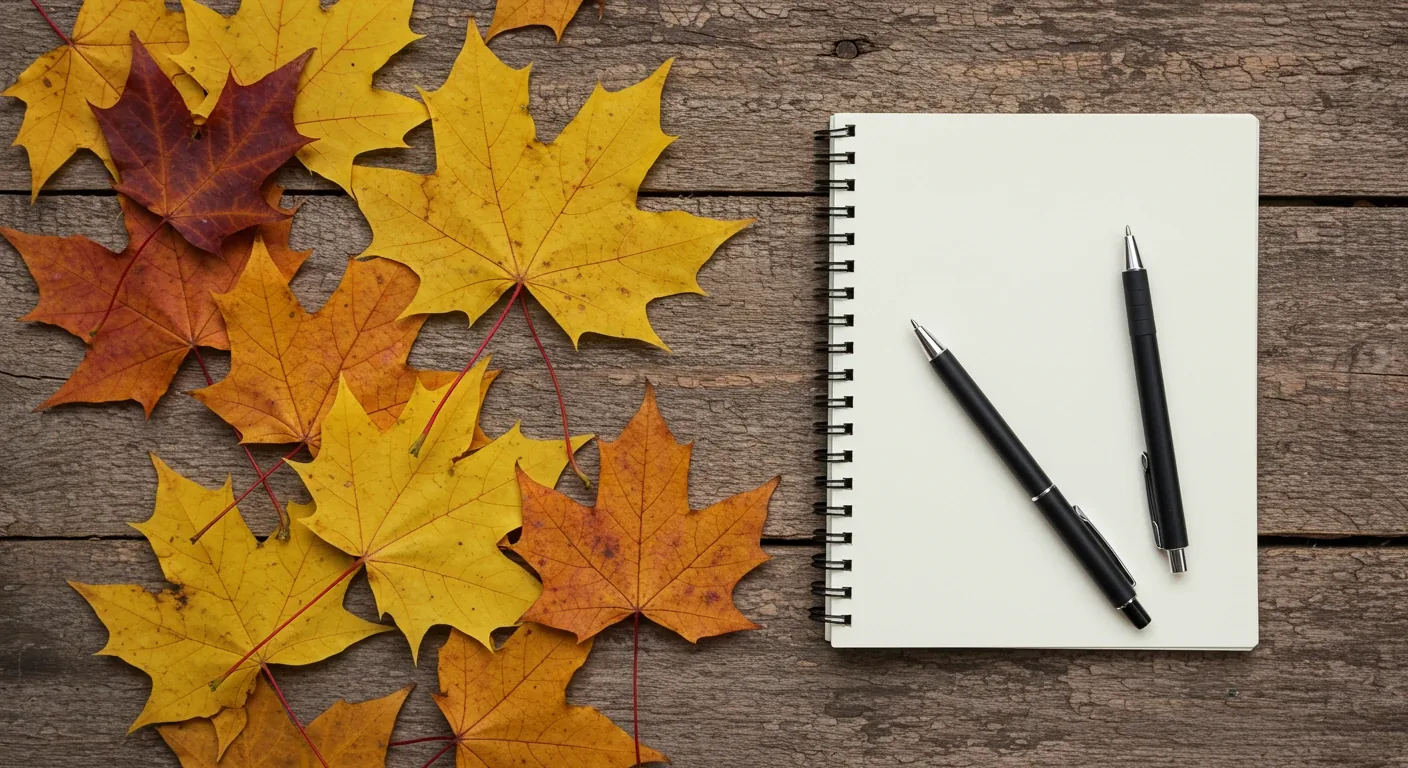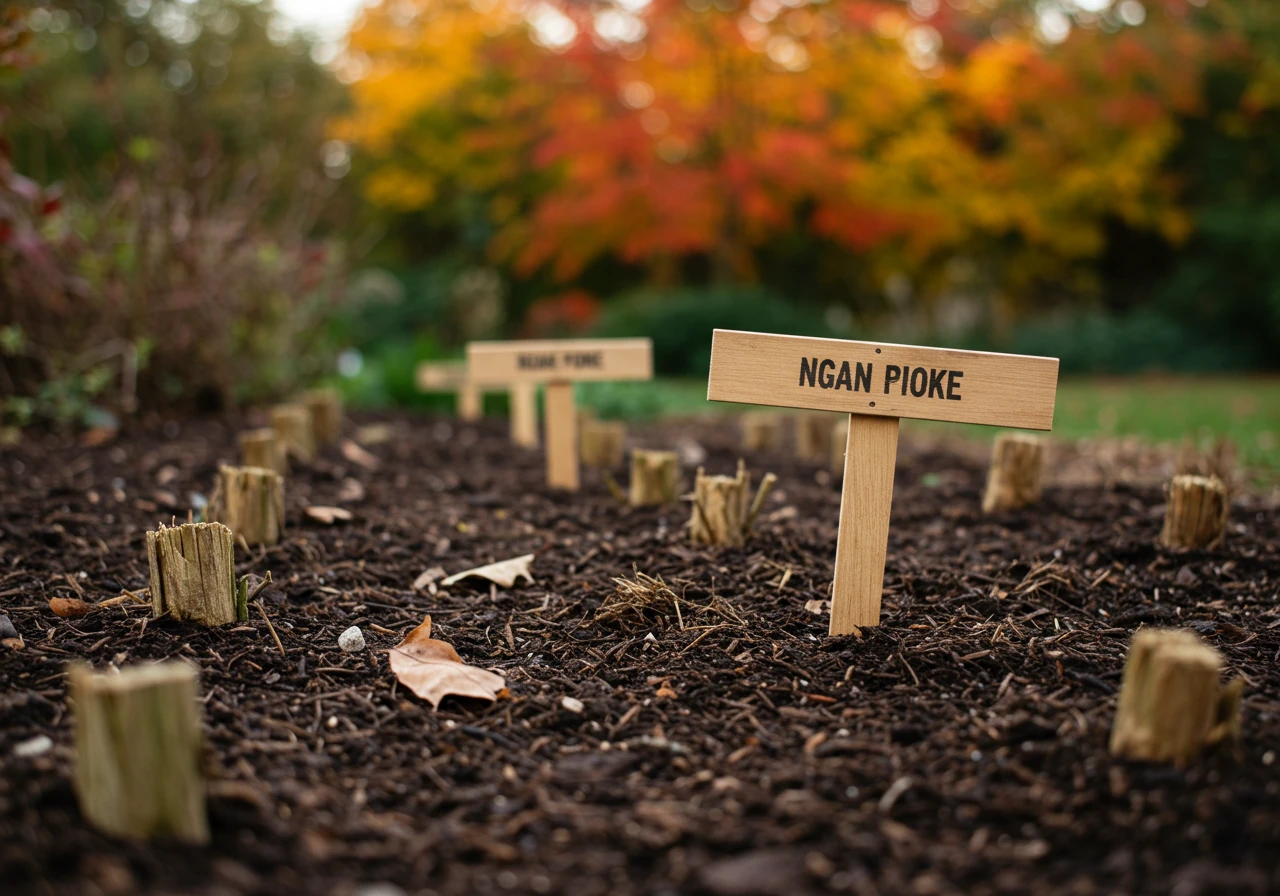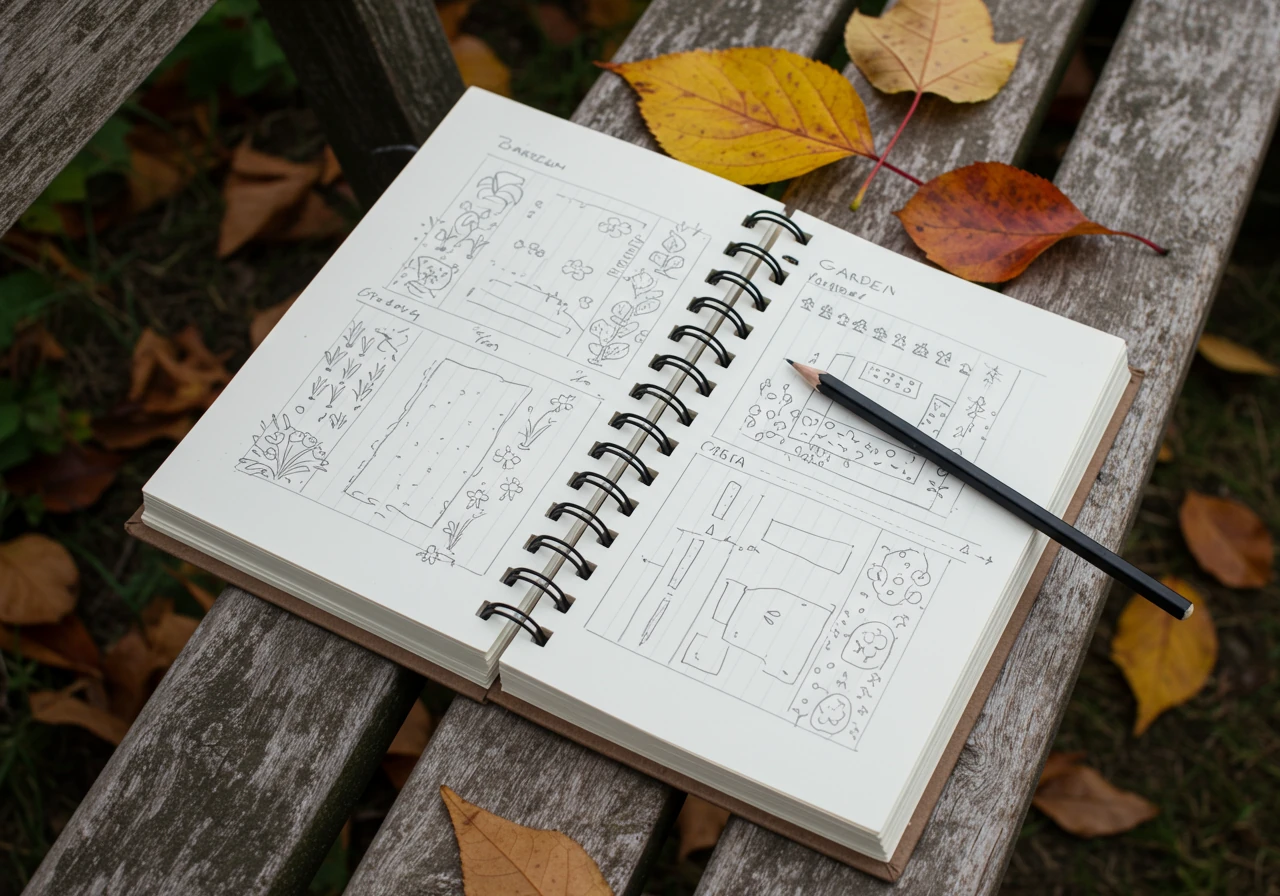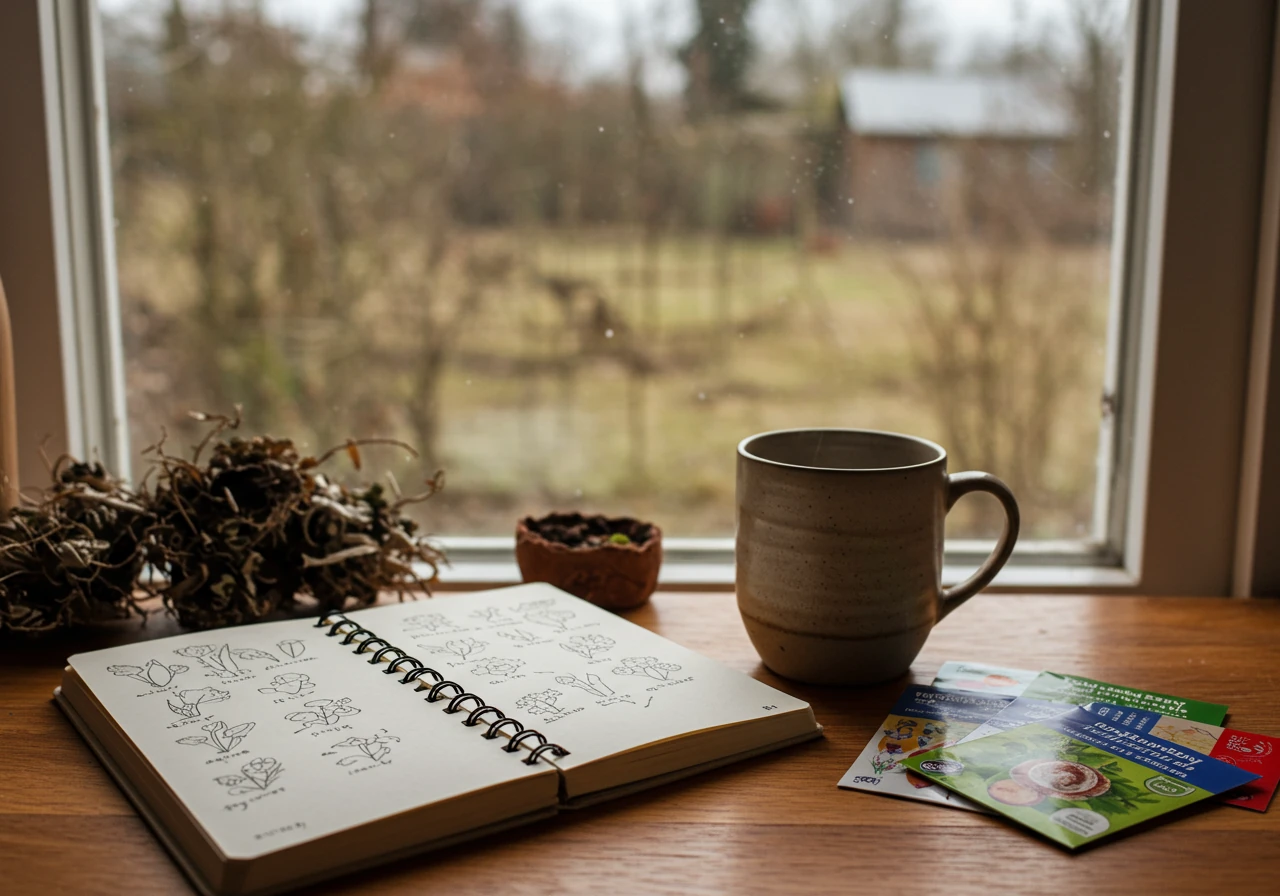Vernon Homes: Fall Garden Logs Prevent Spring Mistakes
Quick Summary: Why Log Your Fall Garden?
- Avoid Spring Guesswork: Remember where bulbs and dormant perennials are planted.
- Learn from Your Garden: Track which plants thrived or failed in your specific conditions.
- Anticipate Problems: Note pest/disease issues to plan preventative action.
- Plan Effectively: Guide fall cleanup, winter protection, and spring tasks based on real observations.
- Save Time & Money: Prevent repeat mistakes and costly replacements.
Ready to ditch the spring scramble and plan your best garden yet? A little fall planning goes a long way. If you need help getting your yard ready, request a free quote today!
Introduction: Ditch the Spring Scramble! Why Your Ottawa Garden Needs a Fall Log
Okay, Ottawa gardeners, let's be honest. Spring arrives, the snow *finally* melts (hooray!), and we burst outside ready to plant... only to face the familiar scramble. "Wait, where did I put those fancy tulip bulbs last fall?" "Did that pricey perennial actually survive our wild winter?" "Oops, bought *another* coneflower – pretty sure I have three already!" Sound familiar? Especially here in the capital region, with our tricky climate – short growing seasons and winters that really test our plants – just winging it in spring often leads to costly guesswork and garden regrets. But what if you could ditch that stress? Enter the simple, yet mighty, *fall garden log*. Think of it as your garden's best friend, helping you remember what worked (and what didn't!), plan smarter, and prep *now* for a gorgeous spring display. Just like careful planning leads to happy homes (perhaps like some lovely ones you might see around Vernon!), a little fall note-taking leads to a happier, healthier garden. Stick with us as we dig into why this easy habit is a true game-changer for your landscaping success next year.

Why Bother? The Forget-Me-Not Strategy for Thriving Ottawa Gardens

Alright, let's tackle the big question: with everything else going on, why add *another* task like keeping a garden log in the fall? Is it *really* worth the effort? In a word: Absolutely! Especially here in Ottawa, where our gardens face unique hurdles like heavy snow cover hiding landmarks, challenging clay soil clinging like glue in spots like Greely, unpredictable frosts, and a sometimes frustratingly short growing season. Think of your fall log not as a chore, but as your secret weapon – your "Forget-Me-Not Strategy" – for a less stressful, more successful gardening year ahead.
Here’s why bothering *now* pays off big time later:
- Your Future Self Will Thank You (Seriously!): Remember that awful feeling in spring when your shovel bites into those expensive tulip bulbs you *just knew* you planted… somewhere else? Or trying to recall if that sad-looking patch is a late-sprouting perennial or just a spot where something kicked the bucket over winter? A simple log entry ("Giant Allium bulbs planted 1 foot behind the bird bath") eliminates the guesswork *before* the snow buries all the evidence. It helps you distinguish between normal dormancy and plants that truly succumbed, perhaps due to lingering issues noted in a good Vernon Plant Health Care Plan for Summer Stress.
- Become a Smarter Ottawa Gardener: Your log is your personal gardening journal, tracking what *actually* works in *your* specific conditions. "Note to self: Peonies flopped – need better supports next year." "That variety of tomato hated the shady corner by the fence." Maybe you live in Manotick and notice certain plants just adore your sandy loam soil, while others struggle. This prevents costly repeat mistakes and helps you tailor your garden to thrive in our specific climate, making the most of every precious growing day. You can even find local resources like the Clean Yards listing on Google for area-specific insights.
- Troubleshooting Made Easy: Did powdery mildew plague your Monarda again? Did aphids wage war on your roses? Jot it down! Note what treatments (if any) you tried and whether they worked. This helps you anticipate problems next season and tackle them proactively. It’s also the perfect place to record observations about plant vitality, maybe after doing your own informal Vernon Fall Plant Health Scan for Garden Color, or deciding which plants showed signs of Vernon Late Season Plant Disease and Fall Plants to Save.
- Plan Your Winter Defense and Spring Attack: What needs extra mulch or burlap wrap this winter? Which beds desperately need compost? Where did you decide to move those struggling hostas *next* spring? Your fall log becomes your action plan, guiding your crucial autumn tasks. It helps ensure your Vernon Fall Cleanup and Ottawa Winter Prep efforts are targeted and effective. And if your log highlights some bigger landscaping adjustments or just a serious amount of leaf clearing needed? Knowing exactly what needs doing makes it easier to budget time or decide if calling in help from Our Landscaping Services or getting a quote for a specific Vernon Yard Cleanup Service is the way to go.
So, why bother? Because a few minutes spent jotting notes this fall translates directly into saved money, saved time, fewer gardening headaches, and ultimately, a more beautiful and thriving Ottawa garden next year. It’s about working smarter, not harder!
Your Garden's Diary: What Exactly Goes In Your Fall Log?
Okay, so you're sold on the *idea* of a fall garden log. Smart move! But now you're staring at a blank page (or screen) thinking, "Great... what do I actually *write* in this thing?" Don't worry, it's not about writing a novel, just jotting down the key details your future, spring-frenzied self will desperately need. Think of it as leaving helpful clues before the snow hides everything!

Here’s a breakdown of the crucial info to capture in your garden diary this fall:
- Location, Location, Location (Map it Out!): Before everything disappears under snow, note *where* things are. This is vital!
- What: New bulbs planted (type, variety, approx. number, depth). Perennials cut back vs. left standing. Markers for dormant plants you don't want to accidentally dig up. Locations of tender plants needing winter protection.
- Example: "Planted 25 'Purple Prince' tulip bulbs, 6 inches deep, in a cluster 2 ft left of the lilac bush." or "Cut back hostas along front walk, left ornamental grasses standing by the deck."
- Tip: A simple sketch or map of your garden beds is GOLD here, especially in areas like Barrhaven where one garden bed might blend into the next. Note distances from fixed points (house corner, fence post, big rock).
- Plant Performance Review (The Good, The Bad, The Ugly): How did things *really* do this year?
- What: Which plants were superstars? Which ones sulked or underperformed? Note specific varieties if you remember them. Any signs of persistent disease (powdery mildew on phlox?) or pest issues (aphids on roses again?)? What treatments did you try, and did they work? Check resources like Landscape Ontario for professional advice if needed.
- Example: "'Goldflame' Honeysuckle thrived on trellis. Bee Balm = mildew magnet, try resistant variety next year? Cabbage moths awful, used netting – worked okay."
- Fall Planting, Moving & Dividing: Document your autumn landscaping moves.
- What: Any new trees, shrubs, or perennials planted? Where did they go? Did you divide overgrown perennials (like hostas or daylilies) and replant the divisions? Note their new homes. This helps track success and plan future Garden Install projects.
- Example: "Moved struggling Astilbe from dry shade to moist spot behind garage. Planted new Serviceberry tree near back fence. Divided 'Stella D'Oro' daylilies – put 3 clumps along driveway edge."
- Soil Secrets & Amendments: What did you feed the earth?
- What: Did you add compost, manure, leaf mold, or other amendments to specific beds? Note where and roughly how much. Any observations about soil structure? Still battling heavy clay common in areas like Osgoode or Metcalfe, or enjoying rich loam? This info helps tailor future planting and feeding. If you're considering major lawn changes, soil notes are key for potential Sod Installation success. The City of Ottawa has good info on composting too.
- Example: "Top-dressed vegetable garden bed with 2 inches compost. Front bed near road still heavy clay, needs more organic matter next spring." Consider professional soil preparation for tough spots.
- Cleanup & Winter Prep Notes: What chores did you actually get done?
- What: Which perennials were cut back? Which left for winter interest? Leaves raked or left as mulch? Specific protection added (burlap wrap on cedars, rose collars)? Any major pruning done? This reminds you what spring Garden Maintenance might involve. If the leaf situation was overwhelming, maybe make a note to consider help next year, like a Marionville Yard Cleanup Service. Did you notice areas abutting public sidewalks needing extra attention? A City Property Cleanup Service might be an option if needed.
- Example: "Cut back peonies & iris. Left Sedum 'Autumn Joy' & grasses standing. Raked maple leaves off lawn, mulched perennial bed w/ shredded leaves. Wrapped young Japanese Maple."
- Wish List & Next Year's Plans: Dream a little!
- What: Ideas sparked during cleanup? Plants you want to add? Areas needing a redesign? Lawn looking thin and needing serious Lawn Care attention next season? Problems to solve?
- Example: "Need more spring bulbs in side yard. Research deer-resistant shrubs for back corner. Lawn needs overseeding in spring. Build raised bed for veggies?"
Simple Log Entry Template:
| Date | Bed/Area | Action Taken | Notes/Observations | Future Plans |
|---|---|---|---|---|
| Oct 15/24 | Front Foundation | Planted 15 Daffodil 'Tête-à-Tête' bulbs near steps | Approx. 4" deep. Soil decent here. | Add mulch layer before hard frost |
| Oct 20/24 | Back Perennial Bed | Cut back Hostas, Daylilies. Added compost layer. | Black spot bad on 'Peace' rose again. Needs dormant spray? | Try disease-resistant rose variety? |
| Oct 25/24 | Lawn (General) | Final mow. Raked leaves. | Some thin patches near driveway. | Aerate & overseed in spring. Consider Ottawa yard cleanup service if needed. |
Paper Trail or Digital Footprint?
Honestly, use whatever works best for *you*.
- Paper: A simple, sturdy notebook kept with your garden tools is easy and accessible. You can easily add sketches. Downside: can get lost or damaged.
- Digital: Apps (like Gardenize), spreadsheets, or even a simple notes file on your phone/computer are searchable and easily backed up. You can add photos! Downside: requires a device and might feel less intuitive for some.
The most important thing is to *start*. Just jotting down a few key notes this fall will make a world of difference come spring. Happy logging!
Step-by-Step: Making Fall Logging a Habit in Nepean (and Beyond!)
Okay, let's turn that great idea of fall logging into an easy-peasy habit! It's simpler than teaching a squirrel not to steal your bulbs, promise. Whether you're tending a tidy plot in Nepean or sprawling grounds near Barrhaven, making this a routine just takes a little nudge. Here’s how to get started:
Step 1: Pick Your Logging Buddy
First things first, how will you record your garden wisdom? Don't overthink it! Old School Cool (notebook & pencil) or Tech Savvy (app/spreadsheet). Choose whatever feels *least* like homework. Perfect for documenting those potential garden Transformations you're dreaming up.
Step 2: Sync It With Your Chores
The *real* secret? Don't schedule "logging time." Instead, tack it onto the fall tasks you're *already* doing. Raking Leaves? Note cutbacks needed. Planting Bulbs? Sketch a quick map. Cutting Back Perennials? Note performance/pests. Adding Compost? Log the beds. Maybe note if an Ottawa Property Cleanup Service is needed next year.
Step 3: Ottawa Fall Logging - A Quick Calendar
Our weather waits for no one! September: Note late bloomers, stress. October: Prime time! Log bulb locations, cutbacks, leaf cleanup (consider a Metcalf Yard Cleanup Service if needed?), soil amendments. November: Log final tasks, winter protection, final wishes. Maybe plan a future Garden Install.
Step 4: Keep it Simple!
Seriously, don't aim to write *War and Peace: Garden Edition*. Bullet points, quick sketches, abbreviations – whatever works. Just capture the key stuff: *What*, *Where*, *Observation*, *Future*. Consistency over quantity is key. Need help selecting materials for future projects noted here? Check our Material Selection page. Learn more About Us and our straightforward approach!
Starting this fall, even with just a few entries, sets you up for a smarter, less stressful spring in your Ottawa garden. Give it a try – your future gardening self will thank you!
From Notes to Knowledge: Planning Spring Success in Richmond Gardens
Okay, deep breath! Winter might still have its frosty grip, especially around Richmond and Winchester, but those gloomy days are *perfect* for brewing a cup of tea and turning your fall garden log from simple notes into powerful knowledge. This is where your autumn diligence truly pays off, helping you plan a knockout spring garden without repeating past uh-ohs. Think of it as your garden's personal cheat sheet!

So, how do you leverage those scribbles? Let’s dive in:
- Smarter Plant Shopping & Placement: Remember that sad patch where the sun-loving coneflowers sulked in the shade? Your log reminds you *before* you buy more doomed plants! It pinpoints spots where specific plants thrived or failed in your unique Richmond microclimate. Use these insights to choose varieties better suited to *your* actual conditions. Your log also prevents the dreaded "Oops, I planted right on top of the tulips!" by showing where bulbs or dormant perennials are hiding.
- Targeted Soil Prep: Did your log mention that the soil near the back fence was compacted or lacked richness? Now’s the time to plan your attack! Schedule adding compost or manure to those specific needy areas *before* planting. Maybe your notes remind you how quickly weeds took over bare soil last year? Planning for professional Mulching and Edging early can keep things tidy.
- Proactive Pest & Disease Control: Ah, the dreaded powdery mildew or aphid invasion noted in your log. Forewarned is forearmed! If your log flagged recurring issues, you can plan preventative strategies now (resistant varieties, better air circulation).
- Avoiding the Déjà Vu Disaster (Example):
Mistake Avoided: Buying another pricey Astilbe for that dry, sunny spot where the last one withered.
Log Insight: "Astilbe near maple tree struggled – too dry. Moved Oct '23."
Spring Plan: Plant drought-tolerant Sedum there instead.
Using your log transforms spring prep from guesswork into a strategic operation. It acknowledges the realities of *your* garden, saving you money, time, and frustration. If your log highlights large-scale cleanup needs extending to the curb, you might even note to investigate a City Yard Cleanup Service. For extensive property-wide tasks noted in areas like Metcalfe, planning based on your log might involve budgeting for a Metcalf Property Cleanup Service or focusing spring efforts after a thorough Metcalf Garden Clean Up Service. It’s all about informed decisions, a core part of how we operate – you can review our estimate process or send a virtual Thank You if you appreciate our tips! So, grab that log, and start planning your most successful Richmond spring garden yet!
Visualizing Garden Success Factors (Example Data)
Log It or Forget It: Key Takeaways
Why Should I Bother Logging?
Think of it as an investment! Your fall log is your garden's memory. In Ottawa's climate, it helps:
- Avoid Spring Amnesia: Remember bulb/perennial locations.
- Learn from Experience: Track plant success/failure in *your* soil.
- Anticipate Problems: Note pests/diseases for proactive planning.
- Plan Actions: Guide winter prep and spring tasks. Consider professional Property Clean Up if needed.
What Absolutely *Must* Go In?
Focus on crucial clues:
- Locations: Bulbs, dormant perennials (sketch/note).
- Performance: Plant stars vs. duds, pest/disease issues.
- Fall Moves: New plantings, divisions, transplants.
- Soil/Cleanup: Compost additions, cutbacks, winter protection.
- Wish List: Ideas for next year.
Unlike website data governed by a Privacy Policy, your garden secrets are safe!
How Do I Use This Info for Spring?
Turn notes into action:
- Shop Smarter: Buy plants suited for *your* conditions, avoid digging up bulbs!
- Prep with Purpose: Target soil improvements where needed.
- Solve Problems Proactively: Plan preventative pest/disease measures.
- Budget Time/Resources: Estimate spring tasks, decide if help like a City Garden Maintenance Service or specialized Marionville Garden Clean Up Service is warranted.
Any Final Tips or Rules?
No strict gnome rules!
- Keep it Simple: Notebook, app - whatever works. Bullets are fine.
- Link to Chores: Log *while* doing tasks.
- Focus on Key Moments: Sept (performance), Oct (planting/cleanup), Nov (prep).
The main "rule" is just to *start*. And speaking of rules, check our company Terms and Conditions when working with us.
Ottawa Garden Log FAQs: Your Questions Answered
Great question! Your log is perfect for tracking which plants *actually* tolerate your specific Barrhaven clay (some surprisingly do!). Note down amendments you try (compost, peat moss) and where, so you can see what improves drainage over time. This targeted info is invaluable for future planting and informs your long-term Soil Preparation strategy, saving you from planting things doomed to drown or struggle.
Absolutely! Even small spaces benefit. Log which container plants thrived in sun vs. shade, which potting mixes worked best, or how often you *really* needed to water specific pots (it's easy to forget!). It helps you perfect your small-space oasis, maybe even tracking successes with vertical gardening or compact veggies. Think of it as maximizing your mini-garden investment, whether it's on a downtown balcony or a small plot near Embrun.
Don't sweat it! While fall notes before snow are ideal, spring observations are still valuable. If you unearth mystery bulbs, jot down their location *now* for next fall. Notice winter damage? Log it. See where weeds are winning? Note that too. Even partial info is better than none. And hey, if you need help sorting out the spring situation, our Ottawa Garden Clean Up Service team is always ready to lend a hand.
We hear you! Logging shouldn't feel like piling on chores. Try the 'micro-logging' approach: just one key note per task (e.g., "Tulips by rock"). If cleanup itself is the main beast, getting help *is* a smart option! A professional service, whether it's for specific city property edges using something like a City Garden Clean Up Service or a full property blitz out near Marionville with a dedicated Marionville Property Cleanup Service, frees you up for the enjoyable bits – like planning!
October is prime time across Ottawa, including Manotick and Kars! It's usually when you're actively planting bulbs, cutting back perennials, and doing major leaf cleanup – perfect moments to jot notes. Don't wait until the first heavy snowfall buries your landmarks! But remember, logging can start in September (noting plant performance) and finish in November (final winter prep notes). Have specific questions about timing for *your* garden? Feel free to Contact Us for advice!
Conclusion: Turn Fall Reflections into Spring Perfection
And there you have it – the not-so-secret secret weapon against spring garden panic: your trusty fall log! We’ve dug into why it’s worth it, what notes to take, and how to make it a simple habit. Think of it this way: a few moments spent reflecting on your garden *now*, while the successes and oopsies are fresh in your mind, translates directly into smarter planting, fewer headaches, and a more beautiful bloom come springtime here in Ottawa. No more shovel surprises or wondering what exactly survived the winter!
It really boils down to turning those quick autumn observations into *spring perfection*. So, grab that notebook or your favourite notes app and jot down a few key things before the snow flies. Start simple – your future gardening self, basking in next year's glory, will definitely owe you one!
Of course, sometimes those fall reflections reveal that the cleanup or spring prep needed is more than you bargained for. If your log highlights a need for some heavy lifting – whether it’s a thorough fall cleanup via our Ottawa Yard Cleanup Service, getting beds ready for planting, or tackling major garden prep – remember Clean Yards is here to help! We’re busy helping gardens flourish across the region, in neighbourhoods like Vernon, Metcalfe, Russell, and beyond. Give us a shout, and let’s work together to make your spring garden dreams a reality.
What’s the *one key thing* you’re determined to log this fall? Share your top priority in the comments below!

